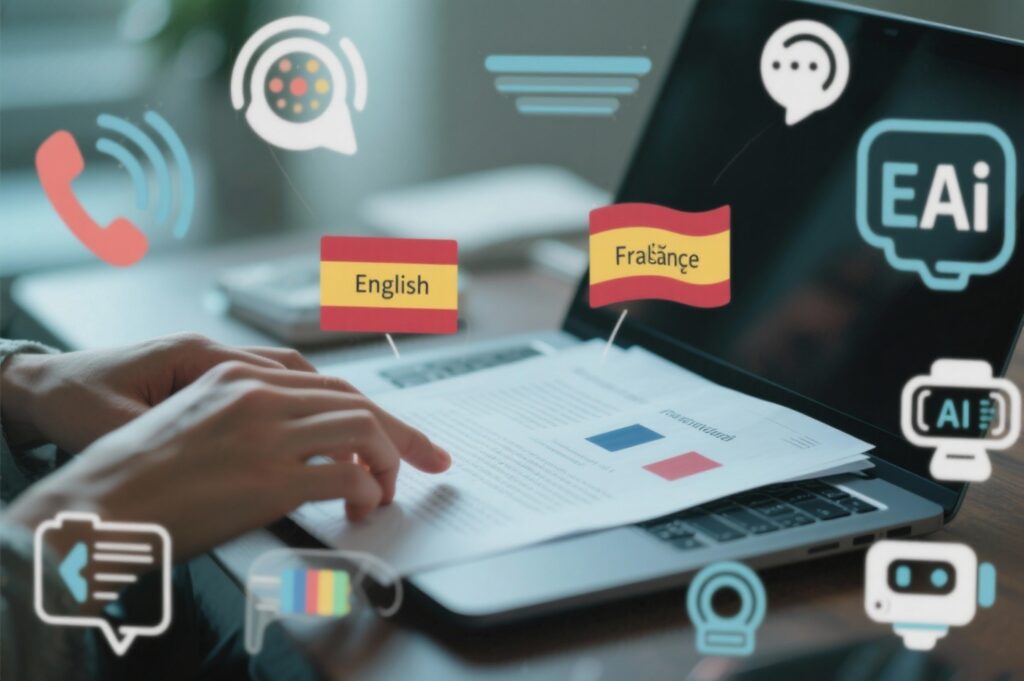
The Bilingual EA Advantage: Why Tech Hubs from Toronto to Austin Are Demanding Multilingual Assistants
In today’s globally connected tech landscape, innovation speaks more than one language.
From Toronto’s multicultural startup scene to Austin’s booming technology corridor, companies are expanding across borders — and so are their communication needs.
Enter the bilingual Executive Assistant (EA) — the unsung hero bridging global teams, clients, and cultures. As tech firms scale internationally, the ability to coordinate, negotiate, and connect in multiple languages has evolved from a bonus skill to a strategic business asset.
This article explores why bilingual and multilingual assistants are in unprecedented demand across North America’s leading tech hubs — and how their skills shape the modern executive ecosystem.

Bilingual EAs serve as strategic connectors, enabling:
- Clearer communication between international executives and teams
- Accurate translation of contracts, memos, and correspondence
- Culturally sensitive interactions with global stakeholders
In essence, bilingual assistants eliminate friction in communication — and in the fast-moving tech industry, that’s a competitive edge.
2. The Modern EA: From Administrative Support to Global Liaison
Gone are the days when EAs focused solely on scheduling and filing.
Today’s executive assistants operate as global relationship managers, often supporting CEOs who lead distributed teams across time zones.
A bilingual EA offers:
- Seamless communication with multilingual teams and investors
- The ability to draft and interpret business materials across languages
- Enhanced coordination of international meetings and travel logistics
- Relationship-building skills rooted in cultural intelligence
For startups with global ambitions, a bilingual assistant is not a luxury — it’s operational necessity.
3. Why Bilingualism Matters in Tech Hubs
Tech companies are inherently multicultural. Whether a Toronto AI firm partners with French or Mandarin-speaking investors, or an Austin fintech startup negotiates with Latin American partners, language often determines deal success.
Key advantages bilingual EAs bring include:
- Client Retention: Clients feel respected and understood in their native language.
- Brand Credibility: Companies appear globally fluent and culturally aware.
- Operational Efficiency: No translation lag or miscommunication delays.
- Employee Engagement: Better connection with multilingual teams.
In a world where communication drives collaboration, bilingual EAs amplify productivity, trust, and brand value.

- Spanish: Vital for communication with Latin American partners and clients.
- French: Essential in Canadian markets like Quebec and international partnerships in Europe.
- Mandarin & Cantonese: Increasingly valuable for Chinese business relations and investments.
- German & Japanese: Key for manufacturing, engineering, and tech collaborations.
Tech companies often give preference to assistants fluent in at least English + one global business language to facilitate smooth cross-border collaboration.
5. The Soft Skills Behind the Multilingual Edge
Language skills alone aren’t enough — top bilingual EAs blend linguistic talent with emotional intelligence and adaptability.
They are experts in:
- Navigating cultural nuances with diplomacy
- Translating tone, not just words
- Managing expectations across diverse work styles
- Anticipating the communication preferences of executives and clients
In tech environments where precision and empathy drive partnerships, these assistants become indispensable.
6. Training and Career Growth Opportunities
With growing demand, specialized EA training programs now include cross-cultural communication, business etiquette, and advanced language certification.
Many bilingual EAs progress into roles like Chief of Staff, International Operations Manager, or Corporate Liaison Officer.
The salary outlook is equally promising — bilingual EAs in North America can earn 20–35% more than their monolingual peers, reflecting the value of their dual skillset.
Conclusion
As North American tech hubs continue to expand globally, the bilingual EA stands out as a bridge between cultures, languages, and leadership.
They do more than manage logistics — they translate intent, preserve relationships, and enable global growth.
From Toronto to Austin, the future of executive support is fluent, adaptive, and multilingual.
For tech executives seeking a true strategic partner, the bilingual assistant is not just an advantage — it’s an essential part of global success.